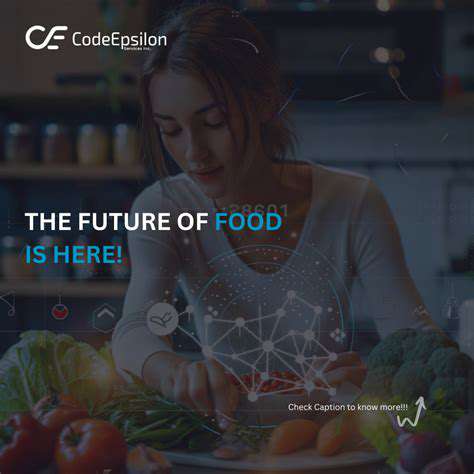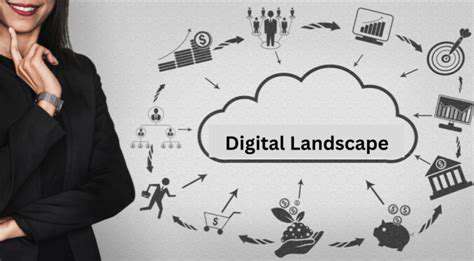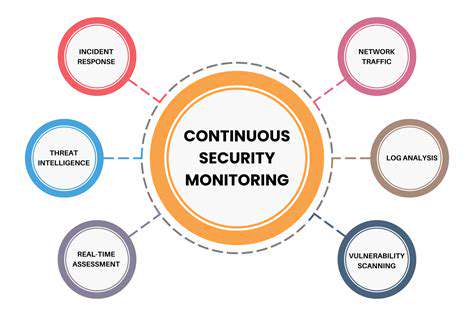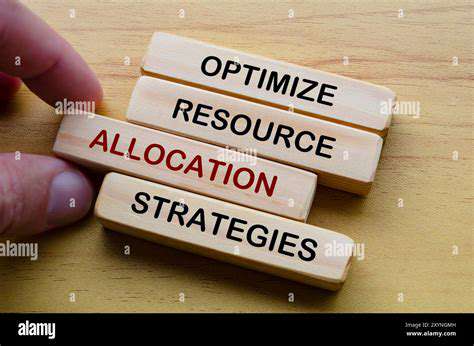The Future of Food Production Technology (Vertical Farming, etc.)
Vertical Farming: A Revolution in Urban Agriculture
Vertical farming, a revolutionary approach to food production, is transforming the way we think about agriculture. By stacking crops vertically in controlled environments, this method significantly reduces the land footprint required compared to traditional farming. This innovative technique offers a potential solution to the increasing demand for food in densely populated urban areas, maximizing space utilization and minimizing environmental impact.
The concept behind vertical farming centers around resource optimization. By controlling factors like light, temperature, and humidity, growers can cultivate crops year-round, regardless of external weather conditions. This consistent environment allows for optimized crop growth and potentially higher yields compared to conventional farming methods. This system also reduces reliance on pesticides and herbicides since the controlled environment minimizes exposure to pests.
Controlled Environments: Precision and Efficiency
One of the key advantages of vertical farming is the ability to meticulously control the environment. Precise temperature and humidity levels are maintained, optimizing the growth conditions for each crop. This controlled environment significantly reduces water consumption compared to traditional farming, as irrigation systems can be fine-tuned for maximum efficiency. This precision approach also minimizes waste and maximizes resource utilization, creating a more sustainable agricultural system.
Advanced technologies, like hydroponics and aeroponics, are often integrated into vertical farms, further enhancing efficiency. These techniques minimize the use of soil, reducing the need for fertilizers and promoting a more sustainable and environmentally conscious approach to food production.
Addressing Urban Food Scarcity
Vertical farming offers a compelling solution to the growing challenge of urban food scarcity. By bringing agricultural practices into densely populated areas, vertical farms can provide a consistent and reliable source of fresh produce, mitigating the need for long-distance transportation and associated environmental impacts. This local production significantly reduces food miles, leading to fresher products and a more sustainable food system for urban populations.
The accessibility and proximity of vertical farms to consumers are crucial benefits. Fresh produce can be delivered quickly, minimizing spoilage and ensuring a high-quality product. This proximity significantly reduces the environmental footprint compared to traditional agriculture.
Technological Advancements and Innovations
Vertical farming is constantly evolving, driven by ongoing technological advancements. Automated systems, sensors, and data analytics are employed to optimize resource allocation, crop health monitoring, and overall farm management. These advancements further improve efficiency and sustainability, making vertical farming a more robust and viable solution for the future.
Robotics and AI are increasingly integrated into vertical farming operations. From harvesting to pest control, these technologies are automating tasks and optimizing the entire process, which is expected to increase production efficiency and reduce labor costs.
Economic Viability and Investment
While initial investment costs for vertical farms can be substantial, the potential for significant returns and long-term economic viability is attracting considerable interest from investors and entrepreneurs. The growing demand for locally sourced, sustainably produced food is creating a compelling market for vertical farming businesses. The reduced reliance on land and water resources can translate into lower operational costs, contributing to the overall profitability of these farms.
The potential for vertical farms to create new jobs and stimulate economic growth in urban areas is a significant consideration. From farm management to product distribution, the vertical farming industry can generate employment opportunities and contribute to the overall economic health of communities.
Environmental Impact and Sustainability
Vertical farming presents a unique opportunity to reduce the environmental impact of agriculture. Reduced water usage, minimized pesticide use, and the potential for closed-loop systems create a more sustainable model for food production. The reduced transportation needs contribute to a lower carbon footprint, aligning with global efforts to mitigate climate change.
By controlling the environmental factors within the vertical farms, the systems can reduce water waste and create a more environmentally conscious approach to food production. The potential to create localized food systems and reduce our dependence on long-distance transportation is a major benefit to sustainability.
Challenges and Future Considerations
Despite the numerous advantages, vertical farming faces challenges, including initial capital investment, energy consumption, and the need for skilled labor. Overcoming these hurdles is critical for the widespread adoption of vertical farming as a viable solution for future food production. Research and development are crucial for addressing these challenges and improving the sustainability and efficiency of vertical farms.
The long-term societal impact of vertical farming requires careful consideration. Ensuring equitable access to fresh produce and addressing potential labor displacement are key factors for creating a positive social impact. Continued research and innovation will be crucial for mitigating any potential negative consequences.
Ergonomics plays a crucial role in ensuring a comfortable and healthy gaming experience. A well-designed workspace, tailored to the specific needs of a gamer, can significantly reduce the risk of developing musculoskeletal issues like carpal tunnel syndrome, back pain, and neck strain. By prioritizing ergonomics, gamers can maintain optimal posture and minimize the physical toll of extended gaming sessions, leading to a more enjoyable and sustainable gaming lifestyle.


Read more about The Future of Food Production Technology (Vertical Farming, etc.)
Hot Recommendations
- Review: The New [Specific Brand] Smart Lock Is It Secure?
- Best Budget Studio Monitors for Music Production
- Top Flight Simulation Peripherals (Joysticks, Throttles, etc.)
- Top Portable Scanners for Document Management On the Go
- Reviewing the Latest Smart Air Purifiers for Your Home
- Best Portable Photo Printers for Travelers and Memory Keepers
- The Future of Personal Transportation Beyond Cars (Hyperloop, eVTOL)
- Top Network Monitoring Tools [Free & Paid Options]
- Understanding the Tech Behind mRNA Vaccines [A Look Inside]
- Guide to Choosing the Right Gaming Chair for Ergonomics









![Best Budget Gaming PCs for Esports Titles [High FPS]](/static/images/25/2025-07/ChoosingtheRightComponentsforMaximumPerformanceonaTightBudget.jpg)

